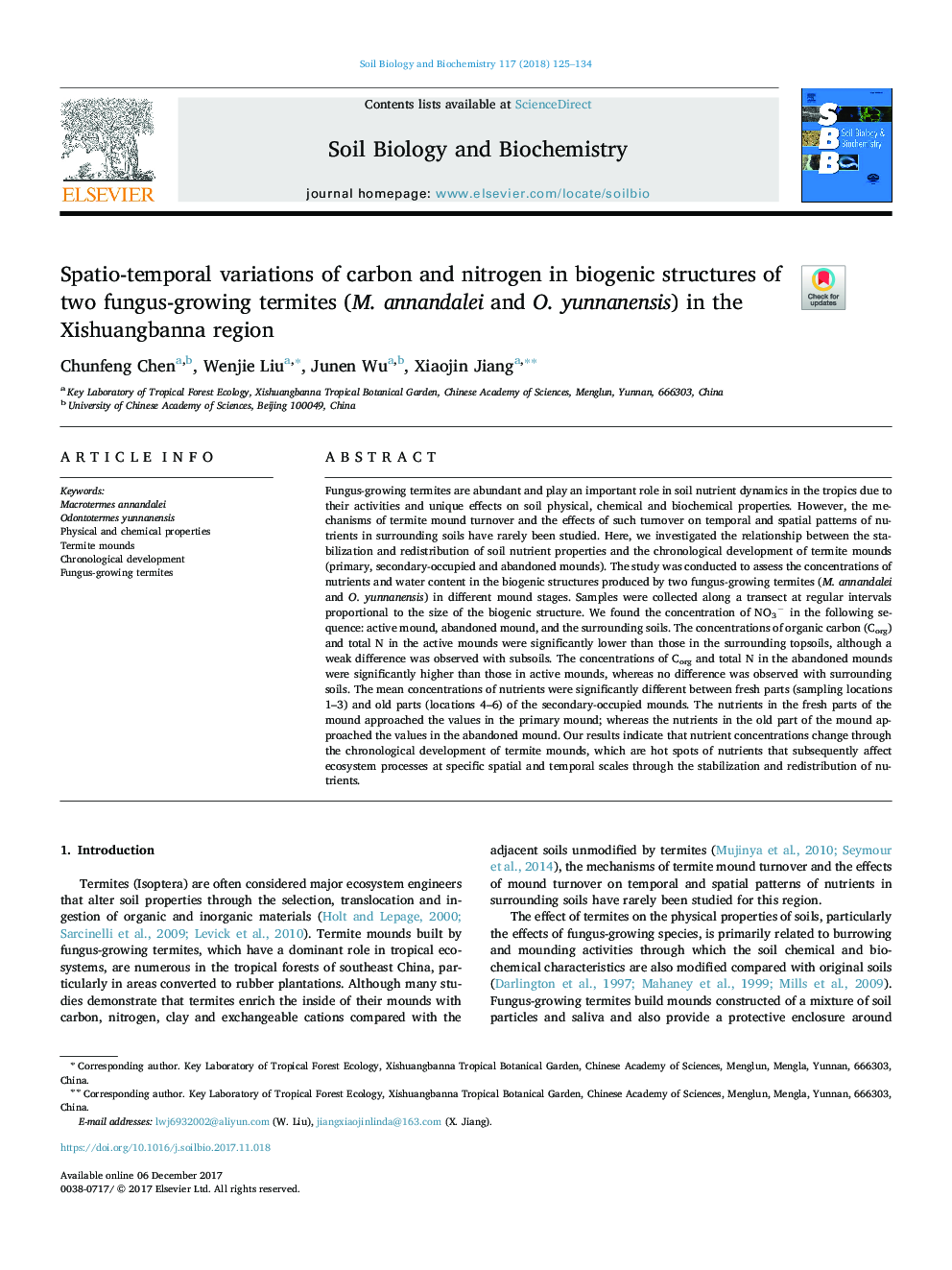| کد مقاله | کد نشریه | سال انتشار | مقاله انگلیسی | نسخه تمام متن |
|---|---|---|---|---|
| 8363095 | 1542567 | 2018 | 10 صفحه PDF | دانلود رایگان |
عنوان انگلیسی مقاله ISI
Spatio-temporal variations of carbon and nitrogen in biogenic structures of two fungus-growing termites (M. annandalei and O. yunnanensis) in the Xishuangbanna region
دانلود مقاله + سفارش ترجمه
دانلود مقاله ISI انگلیسی
رایگان برای ایرانیان
کلمات کلیدی
موضوعات مرتبط
علوم زیستی و بیوفناوری
علوم کشاورزی و بیولوژیک
دانش خاک شناسی
پیش نمایش صفحه اول مقاله

چکیده انگلیسی
Fungus-growing termites are abundant and play an important role in soil nutrient dynamics in the tropics due to their activities and unique effects on soil physical, chemical and biochemical properties. However, the mechanisms of termite mound turnover and the effects of such turnover on temporal and spatial patterns of nutrients in surrounding soils have rarely been studied. Here, we investigated the relationship between the stabilization and redistribution of soil nutrient properties and the chronological development of termite mounds (primary, secondary-occupied and abandoned mounds). The study was conducted to assess the concentrations of nutrients and water content in the biogenic structures produced by two fungus-growing termites (M. annandalei and O. yunnanensis) in different mound stages. Samples were collected along a transect at regular intervals proportional to the size of the biogenic structure. We found the concentration of NO3â in the following sequence: active mound, abandoned mound, and the surrounding soils. The concentrations of organic carbon (Corg) and total N in the active mounds were significantly lower than those in the surrounding topsoils, although a weak difference was observed with subsoils. The concentrations of Corg and total N in the abandoned mounds were significantly higher than those in active mounds, whereas no difference was observed with surrounding soils. The mean concentrations of nutrients were significantly different between fresh parts (sampling locations 1-3) and old parts (locations 4-6) of the secondary-occupied mounds. The nutrients in the fresh parts of the mound approached the values in the primary mound; whereas the nutrients in the old part of the mound approached the values in the abandoned mound. Our results indicate that nutrient concentrations change through the chronological development of termite mounds, which are hot spots of nutrients that subsequently affect ecosystem processes at specific spatial and temporal scales through the stabilization and redistribution of nutrients.
ناشر
Database: Elsevier - ScienceDirect (ساینس دایرکت)
Journal: Soil Biology and Biochemistry - Volume 117, February 2018, Pages 125-134
Journal: Soil Biology and Biochemistry - Volume 117, February 2018, Pages 125-134
نویسندگان
Chunfeng Chen, Wenjie Liu, Junen Wu, Xiaojin Jiang,